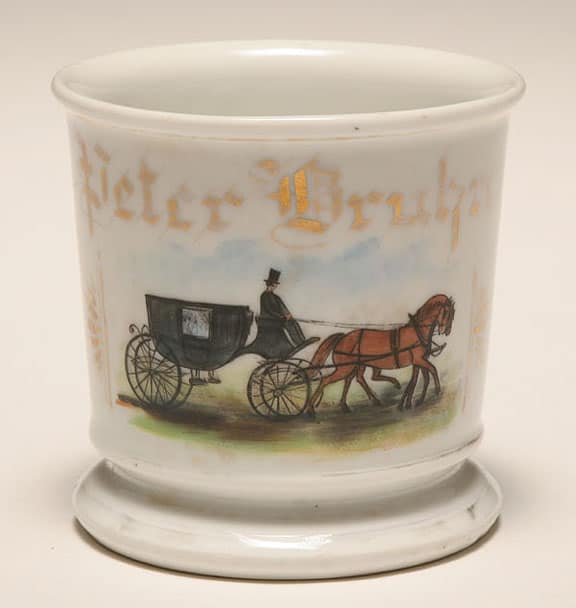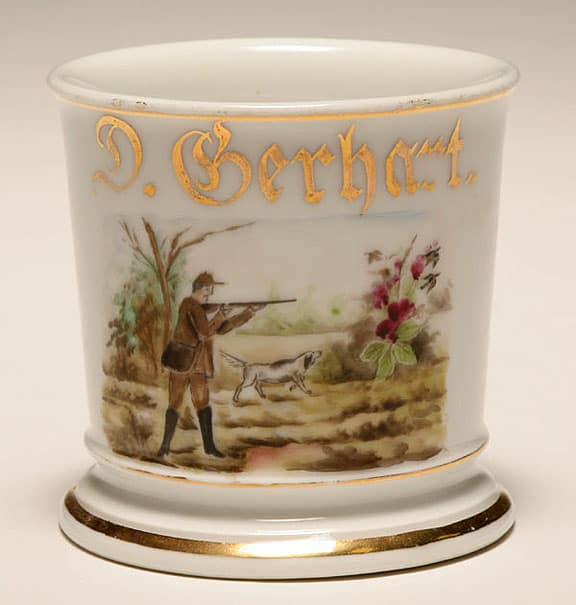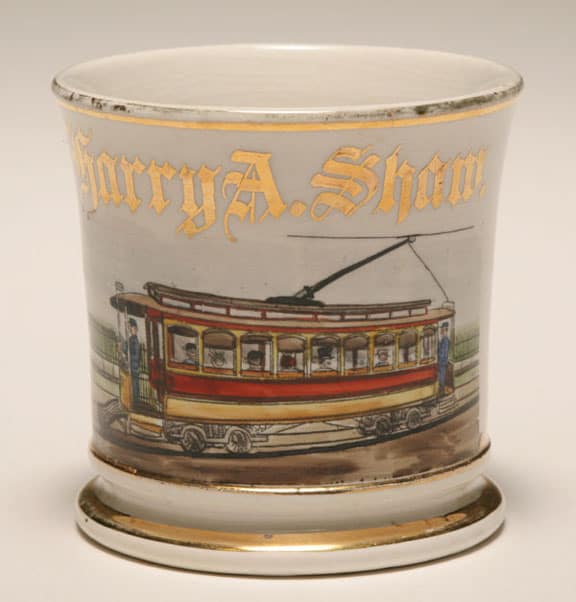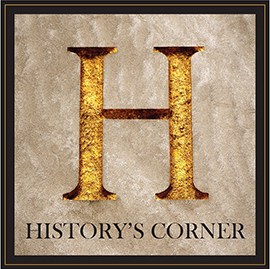[Reprinted from Peachridge Glass]
I have not written or posted about Occupational Shaving Mugs before though I have to admit, each time that Glass Works Auctions comes around with a new auction, I look at the vintage mugs hoping that a Ferdinand Meyer or Ferdinand Meyer II or Ferdinand Meyer III might show up from some Baltimore source. Dana Charlton-Zarro recently asked the question at Bottles Collectors on facebook “Does anyone have a bottle with their name on it?”
This reminded me of my search that probably never will yield the mug I’m looking for, but none-the-less, it is something fun to look at and search for. Looking online, I see the follow decrription:
Occupational Shaving Mugs are at the top of the list when it comes to barbershop collectibles. At the beginning of 1870’s most men owned a shaving mug at home or at his barbershop. The patrons thought it would aid in reducing the rashes caught from the barber but actually it was the unsanitary razors that caused the rashes. Shaving mugs also were a status symbol for barbers and customers as well. The amount of mugs a barber had on display would represent his clientele base.
From 1870 to 1920 millions of shaving mugs were produced making them fairly available today. On any day one can connect to eBay and find hundreds of shaving mugs to bid on. Antique shaving mugs range from tens to thousands of dollars depending on how rare the occupation was the more expensive the shaving mug. Hand Painted occupational shaving mugs are excellent examples of American folk art. Blank mugs were shipped from Germany and France to the US to be painted. Of course all mugs are not created equal. There are personalized mugs with mild detail and those with serious artistry including gold leaf trimming and ceramic glazes then a few sessions in a gas kiln. Collectors simply call it “Eye Appeal.”
Distinctions In Collectible Shaving Mugs is between the mugs used at home and those used in barbershops. Shaving mugs used at home had more appeal, style, shape and artistic expression. They were also the least expensive and could be found in almost any home and purchased from a local catalog. In 1932 Katherine Morrison Kahle wrote a article on old time shaving mugs which was published in Magazine Antiques and they have been popular collectible ever since. By 1949 writer/collector Porter Ware had collected more than 500 different mugs and wrote a book on shaving mugs.
Read More: Collectible Shaving Mugs
Read More: The Shaving Mug
Rad More: Antique Helper






























